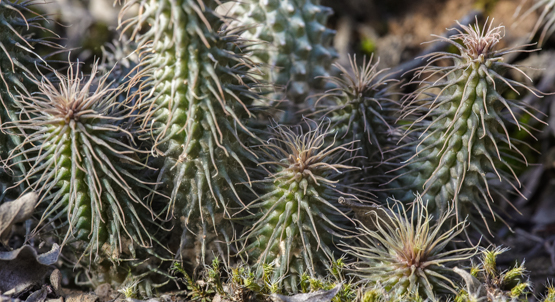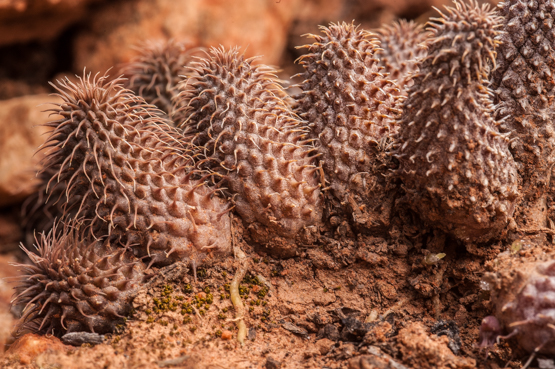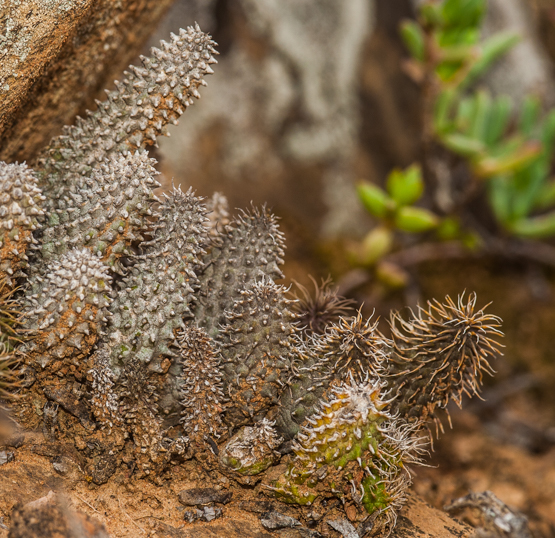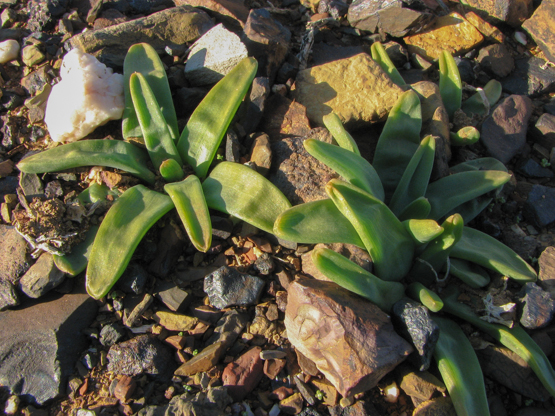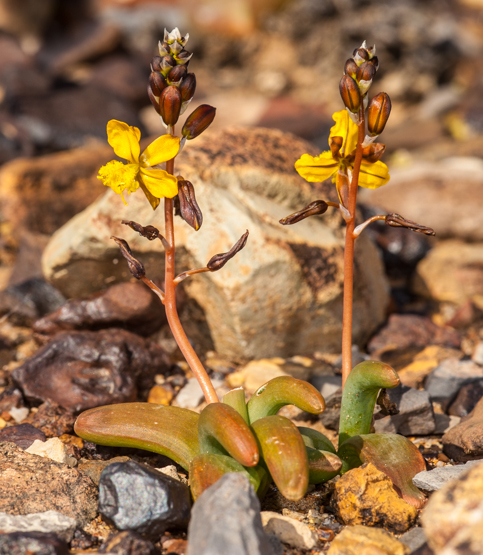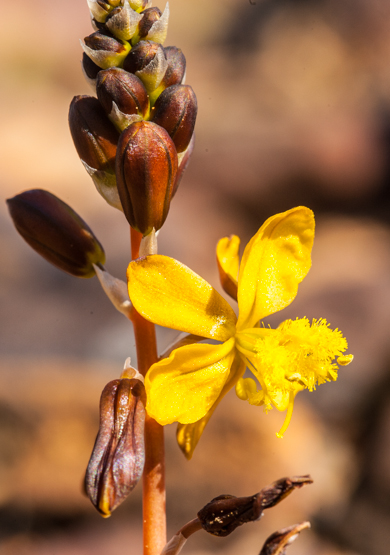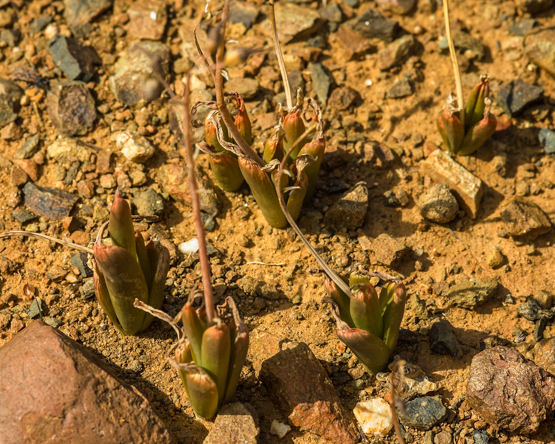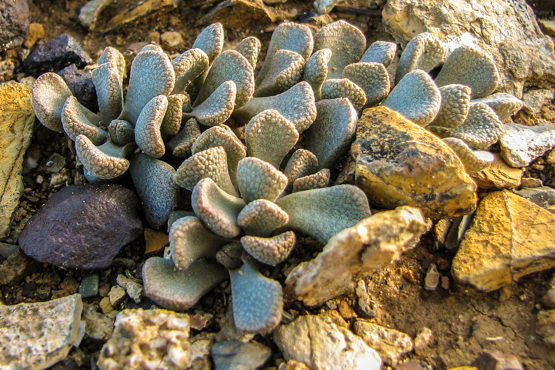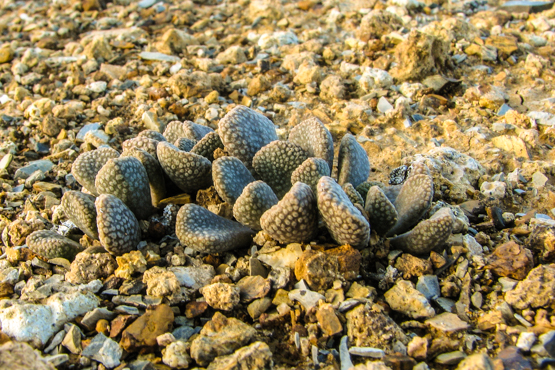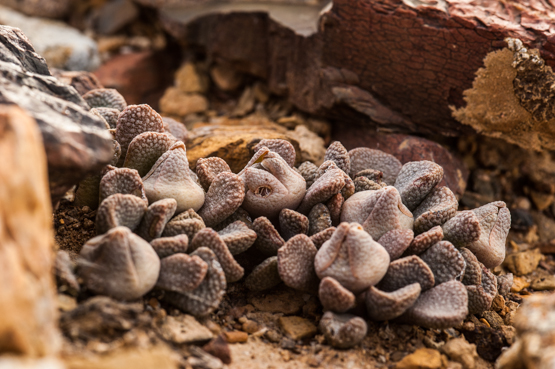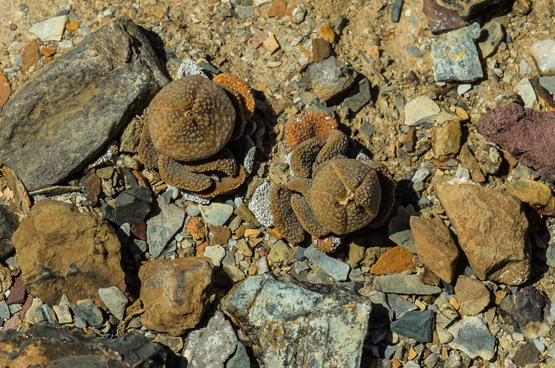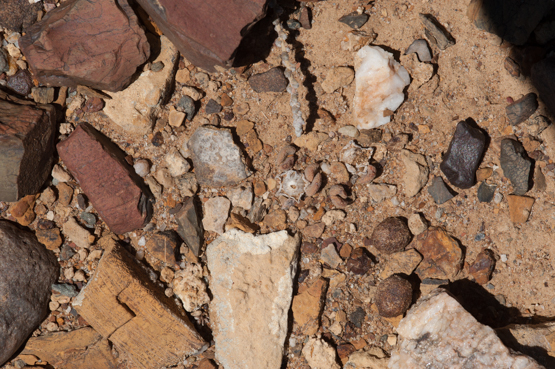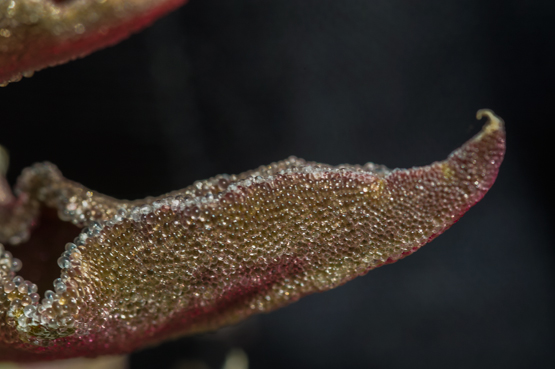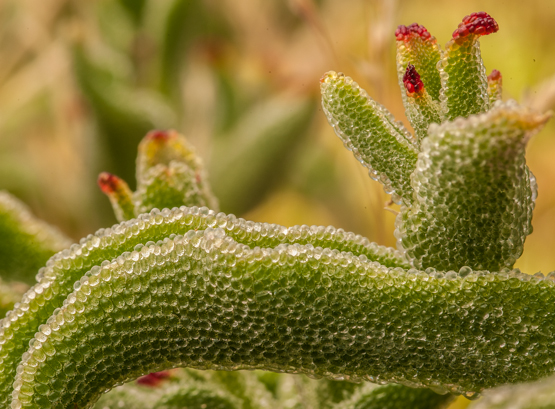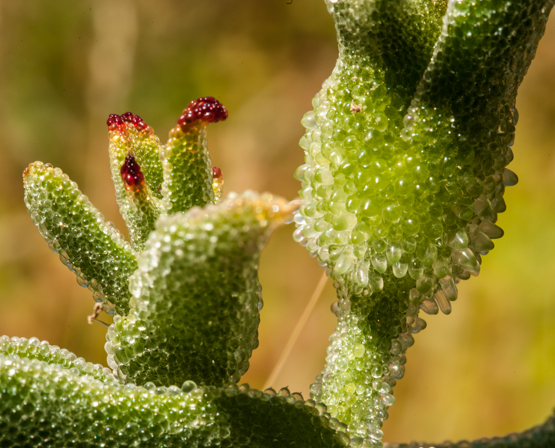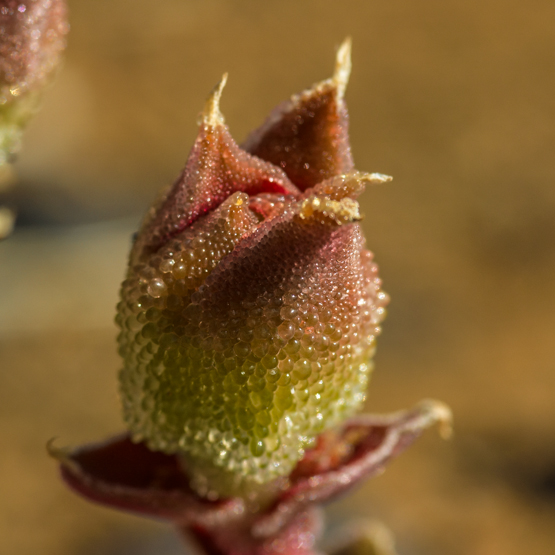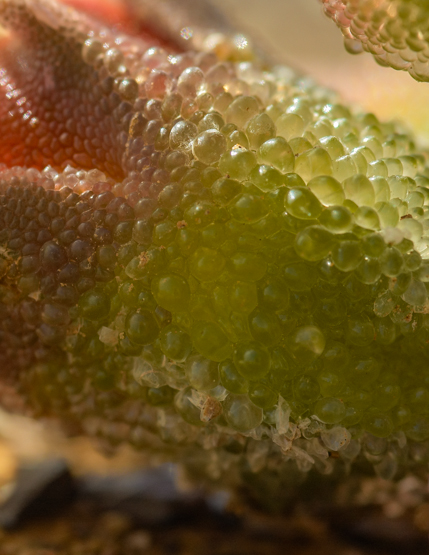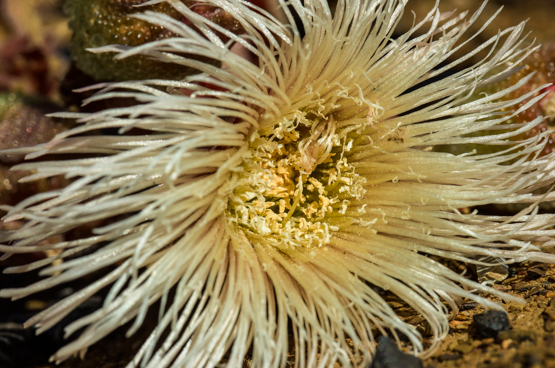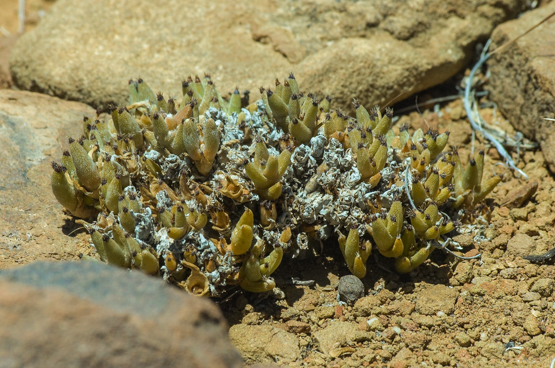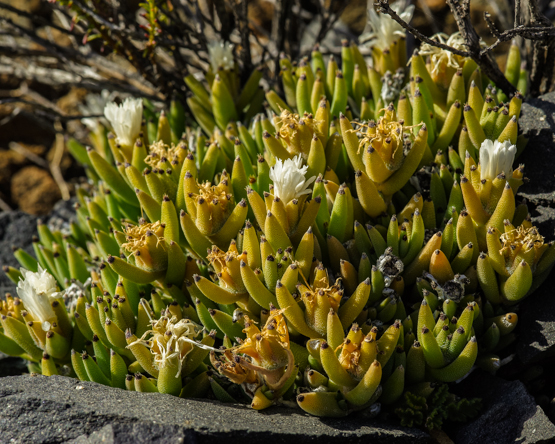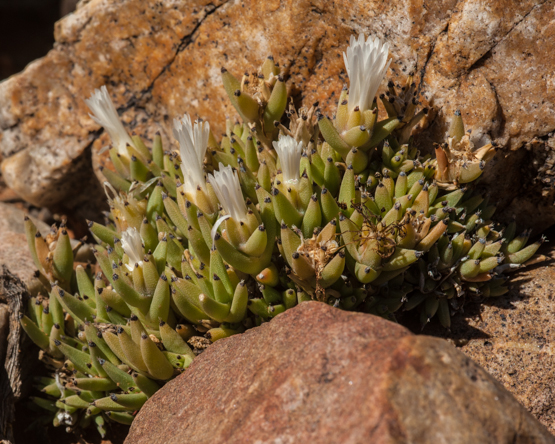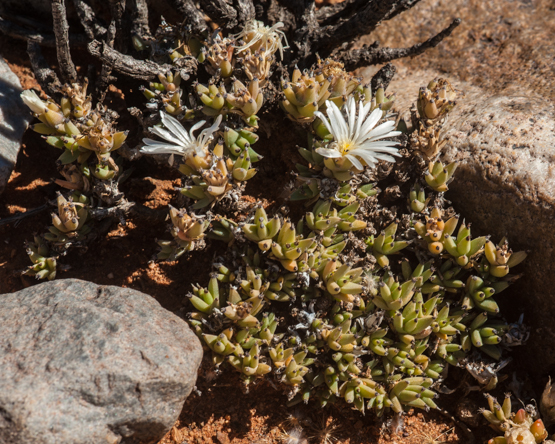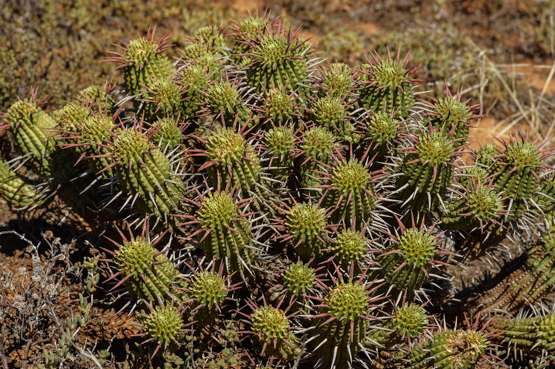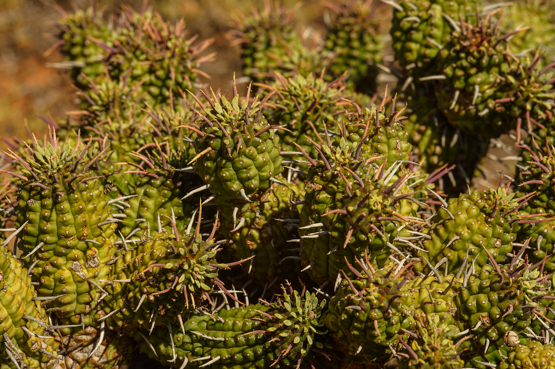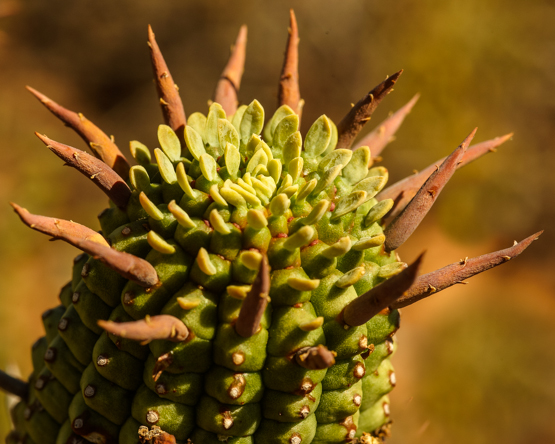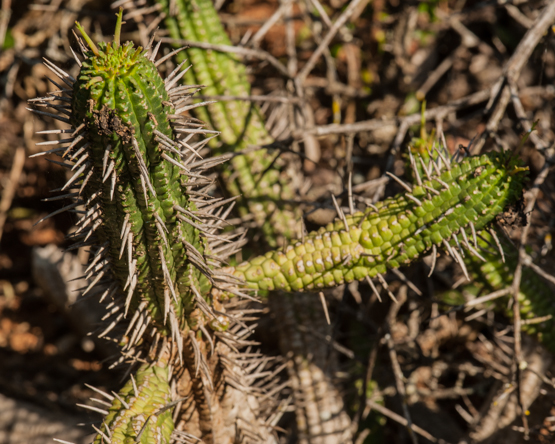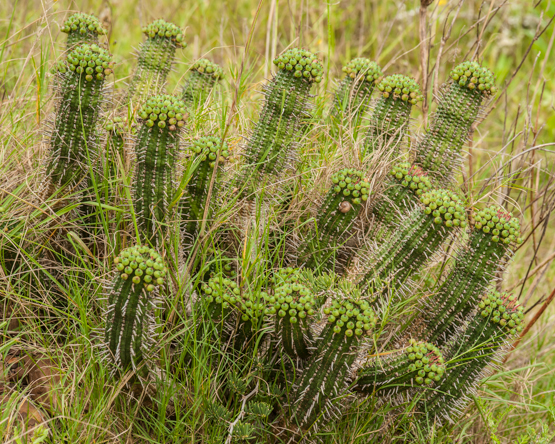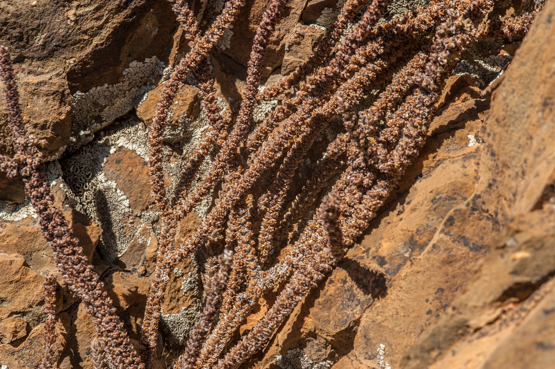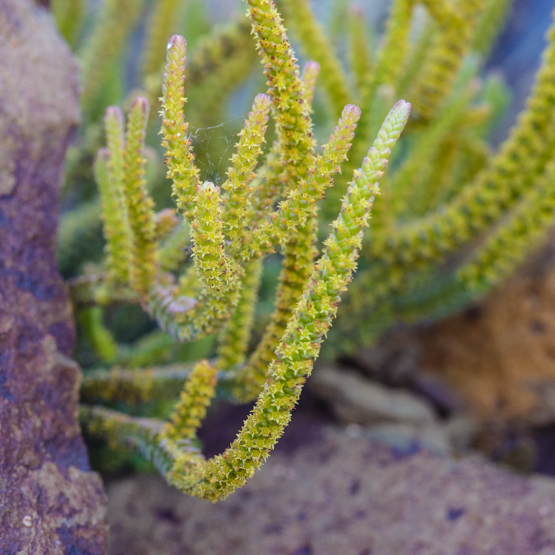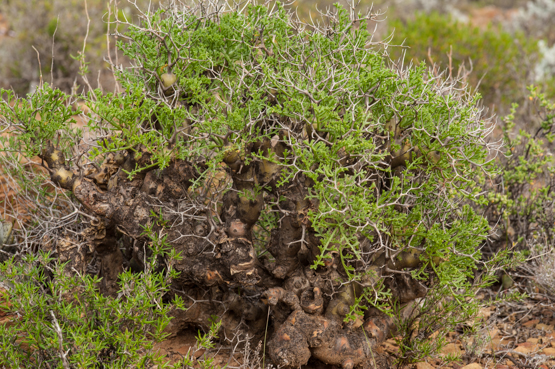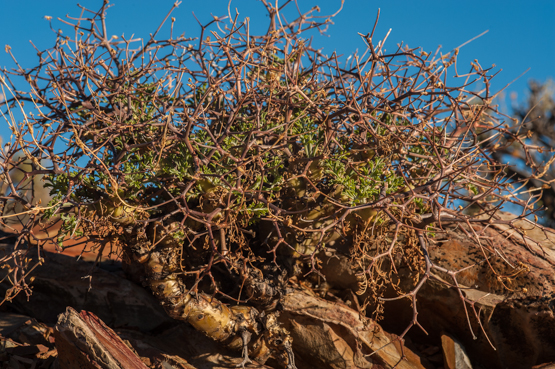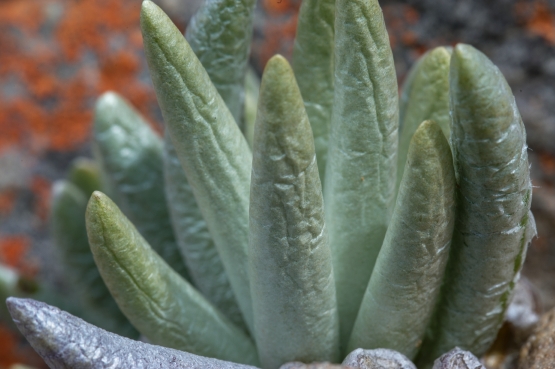With its almost furry stems this species is easy to identify, even without flowers.
Only Stapelianthus pilosus from Madagascar is somewhat similar.
The stems are normally 1.5-6 cm long, but may reach as much as 18 cm; they usually have 10-16 spiral or vertical series of tubercles ending in long hairs. These hairs shade the stems and thereby reduce water loss.
The flowers have an unusual appearance too and appear in spring and summer (Dec.-May).
The plants are found sporadically on stony slopes and clayey flats from Montagu eastwards to Steytlerville in the Eastern Cape and in the Great Karoo from Matjiesfontein to Beaufort West. They occur mostly in the shade of low bushes.
Tag: adaptations
Bulbine succulenta
Why would a plant like this spend a lot of water and energy to produce succulent leaves, only to let them die back when the dry period arrives?
The only reason I can think of is the following: in winter there is a surplus of water, which the woody underground tuber cannot absorb quickly enough.
Leaves, even succulent ones, can grow much faster than tubers, and therefore can store more water in a shorter period. When the weather starts becoming drier and hotter, the water in the leaves is then gradually absorbed by the tuber.
This recycling of water is best known from the mesemb family. It works a bit differently there (for one, very few Mesembs have tubers) but the general idea seems to me to be the same. For more info on this phenomenon, have a look at Water recycling in succulents.
B. succulenta is often locally abundant in the western part of the Little Karoo and further northwards (Tanqua Karoo and Bokkeveld Mts).
Although the leaves in this species may be up to 13 cm long, they are usually much shorter; the width varies from 0.3-1 cm.
The flowers appear from July through September and are yellow (as in nearly all Bulbines).
Pictures are in chronological order:
1 taken 11 July
2 and 3: 4 Sept.
4: 1 Oct.
.
Monsonia (Sarcocaulon) crassicaulis, part 2
The plants form shrubs up to 75 cm tall and seem to prefer stony plains and low ridges. Their thick stems (up to 2 cm thick) have a hard skin containing large quantities of resin and wax. This impervious layer is an excellent way of preventing desiccation.
It also means that the stems can be easily ignited to act as a candle or start a fire.
When you have a good look at the first three pictures, you will notice that the spines start out as leaf stalks, which after a while shed the leaf blades and become hard and rigid.
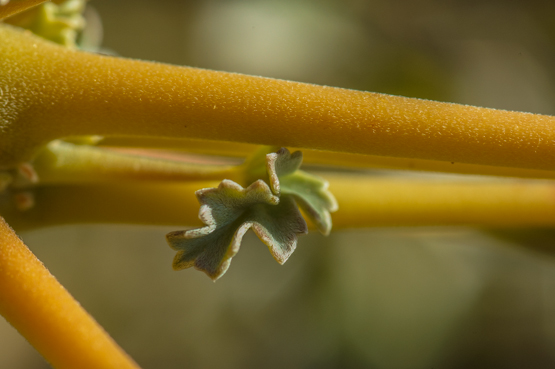
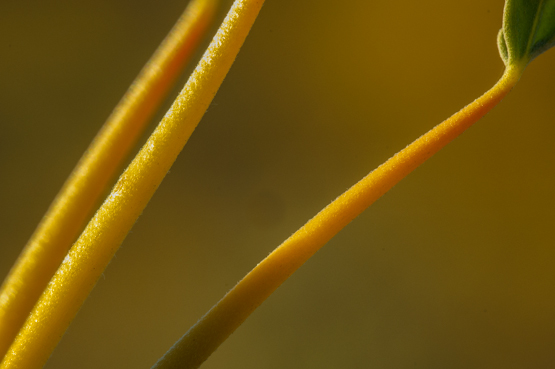
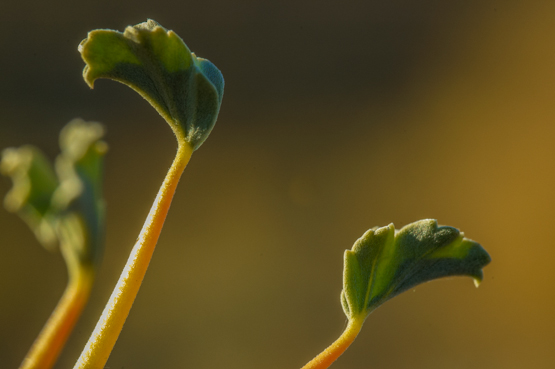
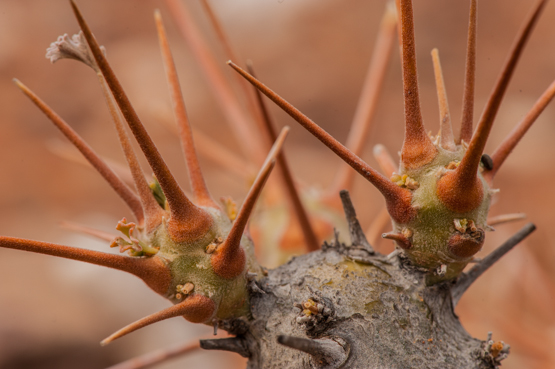
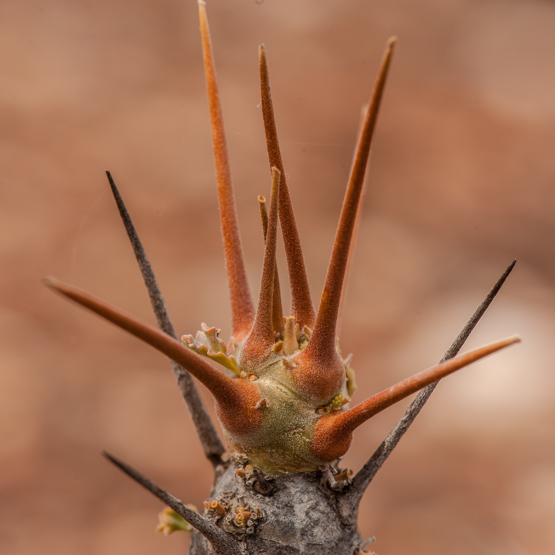
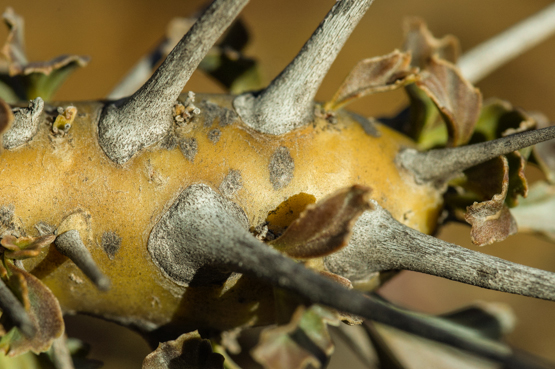
To be continued.
Aloinopsis loganii (1)
Succulent plants may store water in any organ of the plant body. Usually, leaves or stems are used for this purpose, but water can also be stored in the roots.
For this reason we speak of leaf, stem and root succulents. In certain plants the distinction is not so clear-cut, because they use more than one organ for water storage. The subject of this post is a case in point.
The first four pictures were made in winter and spring (between mid July and mid October) and clearly show that the species is a leaf succulent.
Or, so it would seem. The last two photos were made in summer (late January). In #5, most of the leaves have disappeared and the plant was only found because the fruits stand out against the background. In #6, the knife points at a plant at either side of it and here too, very little of the leaves is left.
This begs the question how these plants can survive the drought and heat of the remaining summer period. For the answer we have to go beneath the surface (literally). When we do that, we will find a nice fat tuberous rootstock with enough storage capacity for the plants to aestivate (spend the summer in a dormant state).
The species is only found in a small area near Laingsburg, where most of the rainfall occurs in winter.
To give you some idea of the size of the plants: the leaves are up to about 20 mm long, 8 mm wide and 4-4.5 mm thick.
Mesembryanthemum guerichianum (2)
The big bladder cells that cover leaves and calyxes give the impression of beautiful jewellery, but their reason for being there is rather more prosaic. They function as external water storage for the plants (see post 17 Dec. 2012).
Trichodiadema mirabile
The genus name is derived from Greek trix = hair and diadema = crown. This refers to the tuft of stiff hairs or bristles present on the tips of leaves and sepals.
The diadem is believed to be able to absorb dew and rain water. This idea is supported by the fact that in cultivation, where there is usually much more water available to the plants, the diadem is often not well developed.
The crown of hairs can be removed as a whole and is the most characteristic property of the genus. In spite of this, diadems are not present in all species, nor do they all look the same. In most cases the diadem consists of radiating hairs, but in a few species the diadem is a tuft of erect bristles. T. mirabile is a case in point.
The species forms an erect shrublet up to 8 cm tall. The beautiful, pure white flowers are up to 4 cm in diameter and appear from October to January.
The plants can be found on stony slopes from the Laingsburg area to Uitenhage.
Euphorbia mammillaris
The original E. mammillaris was known to occur from the Riversdale district in the west to the Oudtshoorn area in the east. The plants growing there look like the ones in the first 3 pictures.
Pictures 4 and 5 show plants from near Port Elizabeth in the Eastern Cape. They represent what used to be called E. fimbriata, with rather narrower and more sinuous stems. This habit is an adaptation to the growing conditions there: a dense cover of bush or grass as opposed to the open habitats in the west.
Crassula muscosa var. muscosa (1)
The great Linnaeus himself described this species way back in 1760. The adjective muscosus means moss-like, which is certainly an apt name for some of the many guises in which this species comes.
In var. muscosa the branches are usually 20-40 cm long (sometimes up to 80 cm) and upright, creeping or scrambling. An old synonym for it is Crassula lycopodioides, referring to Lycopodium or clubmoss. This variety is found from southern Namibia to South Africa’s South coast, but is especially widespread in Namaqualand and the Great Karoo and neighbouring areas. Even within this one variety (there are four in total) one comes across a great number of different forms. In the wild the leaves are generally greyish green to brown; in cultivation one also finds other colours.
The plants often grow in very dry spots. The same thin and densely leaved branches that make them look so delicate, seem to be rather effective in condensing dew and fog and channeling this moisture to their roots.
Pelargonium crithmifolium (2)
In the preceding post I mentioned the persisting inflorescences that are so characteristic of this species. When you look back at that post you will notice that even young plants produce them.
One cannot help but wonder what purpose these outgrowths serve apart from the obvious one: supporting the flowers and fruits (which could be done with a far less complicated and heavy structure). We have to bear in mind that these plants live in difficult circumstances and cannot afford unnecessary extravagances. In other words, there must be a proper return on investment and the best return would be one that helps the plants to survive.
To my mind, the persisting inflorescence has three functions:
— It keeps browsing predators away.
— It helps shade the plant and thereby lower the temperature.
— The intricate structure of branches diminishes the speed of the usually hot and desiccating wind.
It is interesting that these functions have their strongest influence at the place where they are most helpful: the growing tips of the stems, with their soft and tender young leaves.
More pictures to follow.
Senecio scaposus
This species is found sporadically from Montagu eastwards to the Eastern Cape, usually on rocky outcrops. The leaves are covered in silvery grey felt, protecting the plant against desiccation.
The first picture was taken southwest of Ladismith, the second one northwest of the same town and the last one at the foot the Rooiberg near Calitzdorp.
